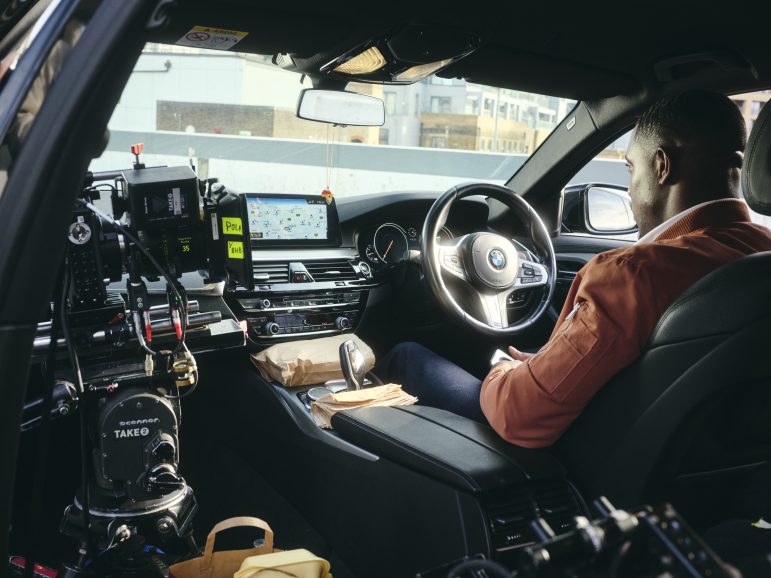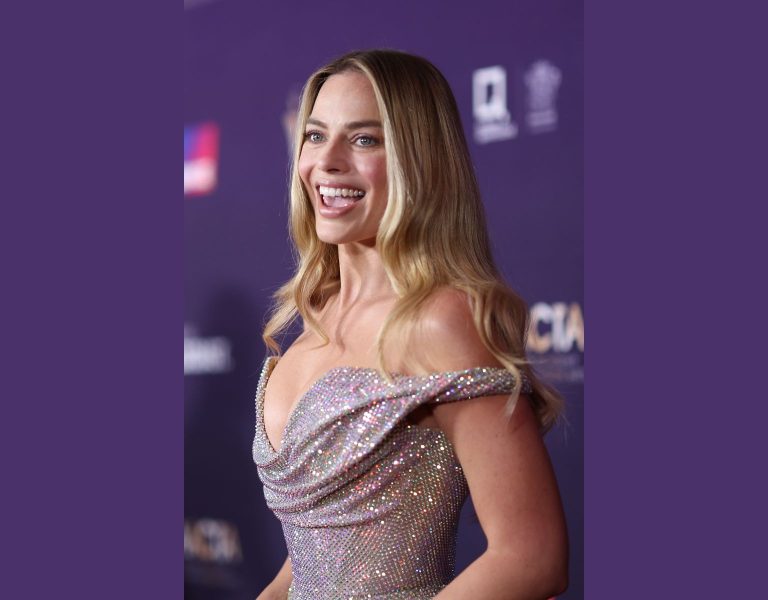DRIVING THE LOOK
Cinematographer Jasper Enujuba helps first-time narrative writer-director Ntando Brown bring short film My Brudda to life in South London.
About a decade ago, writer-director Ntando Brown was on his lunch break in East London when a man in a shiny BMW approached, wanting to sell him a designer watch. “He had all the patter, all the chat and I was sucked in,” says Brown, founder and director of the creative agency, Out Since Tuesday. “I barely even saw the watch, but I bought it.”
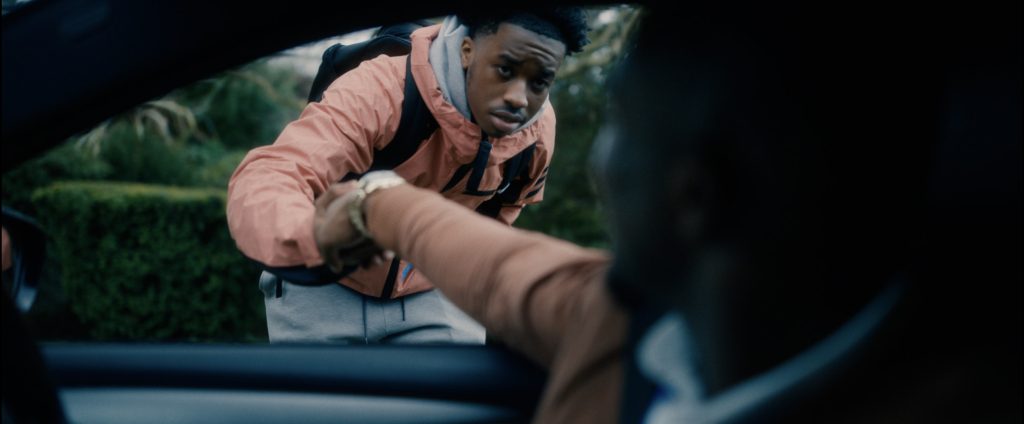
It was, of course, a fake. But about six years after that, as Brown was putting his bins out at his home in South London, the very same man in just as shiny a BMW drove up to him again, trying to sell him another watch. This time, Brown didn’t buy it; in fact, stunned by the coincidence, he barely spoke. But the interaction intrigued him so much that he sat down and wrote a script about who he thought this man might be.
“I was diving deep into fatherhood and masculinity at the time,” says Brown, “and Jasper [Enujuba, my cinematographer] and I were having conversations and debates [around those concepts]. I started to think about how the transition into parenthood was the most interesting [thing] to me, and how for men and women it’s very different.”
That’s how the themes of hustle, brotherhood, fatherhood, and attempting to break free of a cycle found themselves in My Brudda, a 17-minute short which stars Junior Afolabi Salokun as Jamal and takes place mostly inside a BMW over the course of one day.
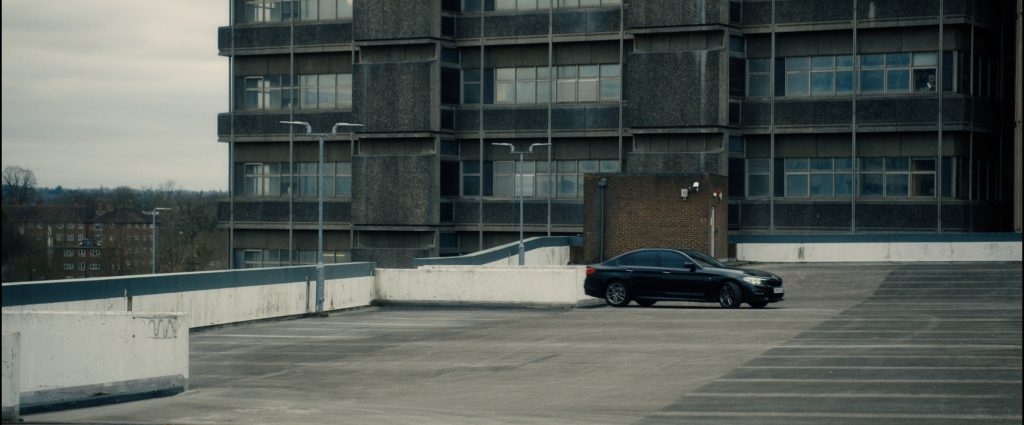
“Stereotypically,” adds producer Ashleigh Ashley, “the Black father is absent. And I found it really honest and compelling the way Ntando wrote the story behind this ‘absent father’. It’s not always as simple as it seems. And Jasper did really well creating the isolation and allowing a spotlight for this character to be human.”
Enujuba was one of the first people Brown showed the script to. The two had formed a friendship through working together on commercials for brands like Adidas, Depop, and Samsung. From those conversations, Enujuba made it clear that he wanted to shoot My Brudda, what would be their first narrative project together. Ashley came on board to produce through a chance meeting with Brown at People of Colour Creative, and both leaned heavily on Enujuba’s experience with narrative filmmaking to bring the short film to life over a very fast, four-day winter shoot.
“We had a lot of theoretical conversations about how we wanted the film to feel,” says Enujuba, who painted, drew, and sculpted as a child, first picking up a camcorder at 11 years old in Abuja, Nigeria. “Ntando told me he wanted the audience to feel like they were in the car [with Jamal], that they were in South London, and he also wanted the car to be a major character. All those things gave me clues to the technical, to pick out the tools to make those visuals happen.”
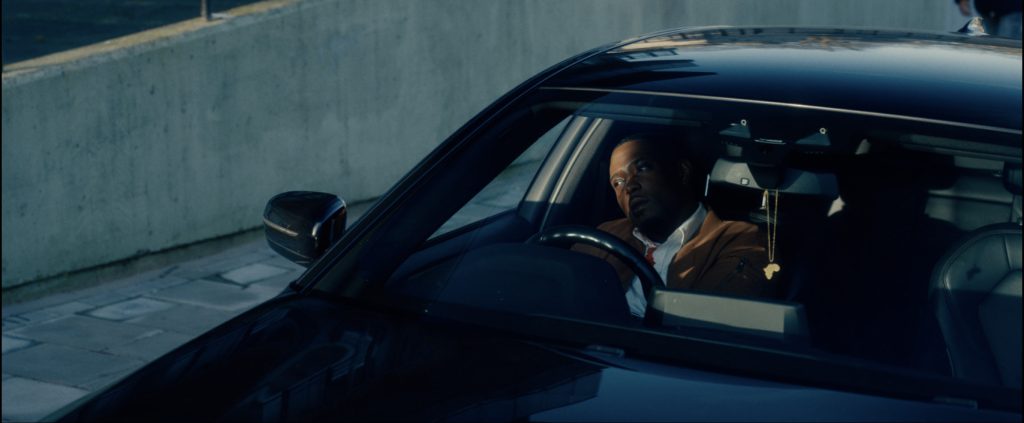
Enujuba filmed on the Sony Venice 2 with Zeiss Supreme lenses at a 2.39 aspect ratio, the classic anamorphic widescreen format. Shooting at full frame, he felt that gave him more depth of field and a theatrical feel to what could be construed as a constricting space inside a car. Brown and Enujuba bonded over the visuals from Uncut Gems and Children of Men for My Brudda, and they were keen on using celluloid to capture that gritty feel. But, as usual, time, budget, and logistics of shooting in and around a car wouldn’t allow for it. Enujuba also initially wanted to use Panavision Primos, but the tight space couldn’t accommodate their length, and he felt the Zeiss Supremes were perfect as the runners up-because they’re so good at representing real life.
“We had to shoot almost everything inside the car [because of budget],” says Brown, “but we still wanted it to feel expansive; we had to fit everything in the shot without it being too tight, so that’s why [Jasper suggested] 2.39 because we could still get those expansive wides inside the car without feeling too claustrophobic.”
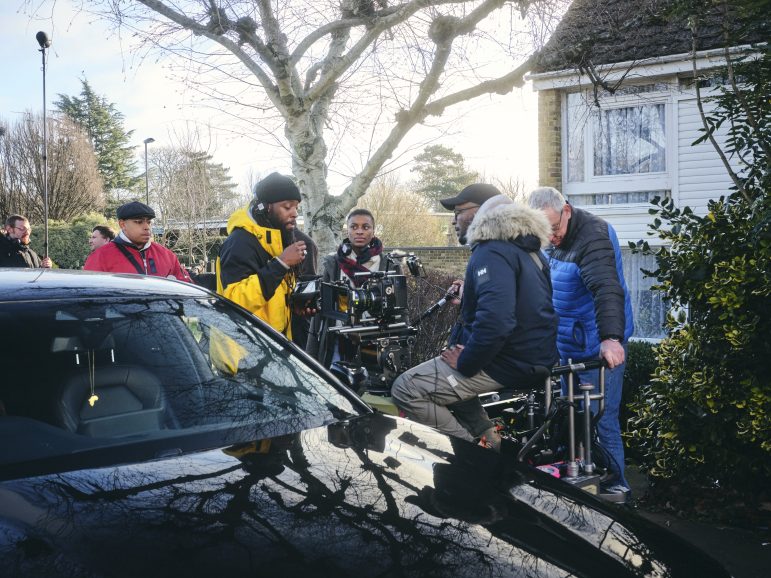
As any DP knows, filming inside a car gets very tight very quickly. Often they’d have Brown, their first AC and Enujuba all in the back seat. The front passenger seat was removed to give space for the camera rig, but the main reason they chose the Venice was because of the Rialto extension where you can split the body and the sensor with the lens. So, main camera body was in the backseat, and sensor, matte box, and the lens on a tri-hat was where the passenger seat would have been.
One of the most challenging moments of filming, though, was with the camera mounted on the bonnet. It was the last scene and the last day of shooting, and it was all-hands-on-deck to make the tricky shot work.
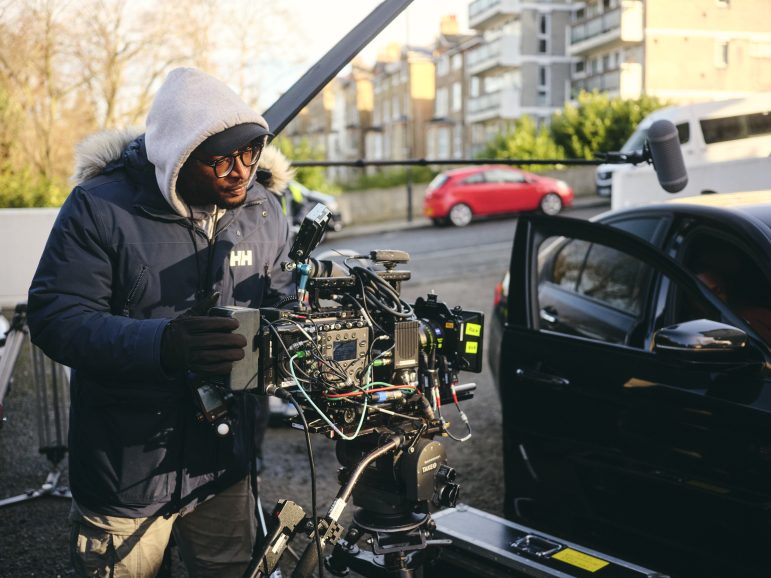
“We were ambitious with how we wanted the film to feel,” says Enujuba. “It was technically challenging. That last shot we wanted to pull out from a close-up to a wide as the car [turns away from the curb] and drives off, and have the camera still attached to the body of the car. The grip kit I had wasn’t right, so I had to do it manually – the pan, the focus, locking the camera in place. Sometimes the movement would jerk [the camera] a bit and it wasn’t smooth, so we had to start again. I think it took about 15 takes.”
Ashley adds: “You smashed it, Jasper.”
My Brudda has been official selection at multiple festivals, including London Short Film Festival, BFI London Film Festival, and the Oscar-qualifying Hollyshorts Film Festival. It also received an honourable mention at South London Film Festival, which felt especially poignant since Ashley and Brown are both from there. “I always said that I wanted to make my first film an ode to South London,” says Brown.
